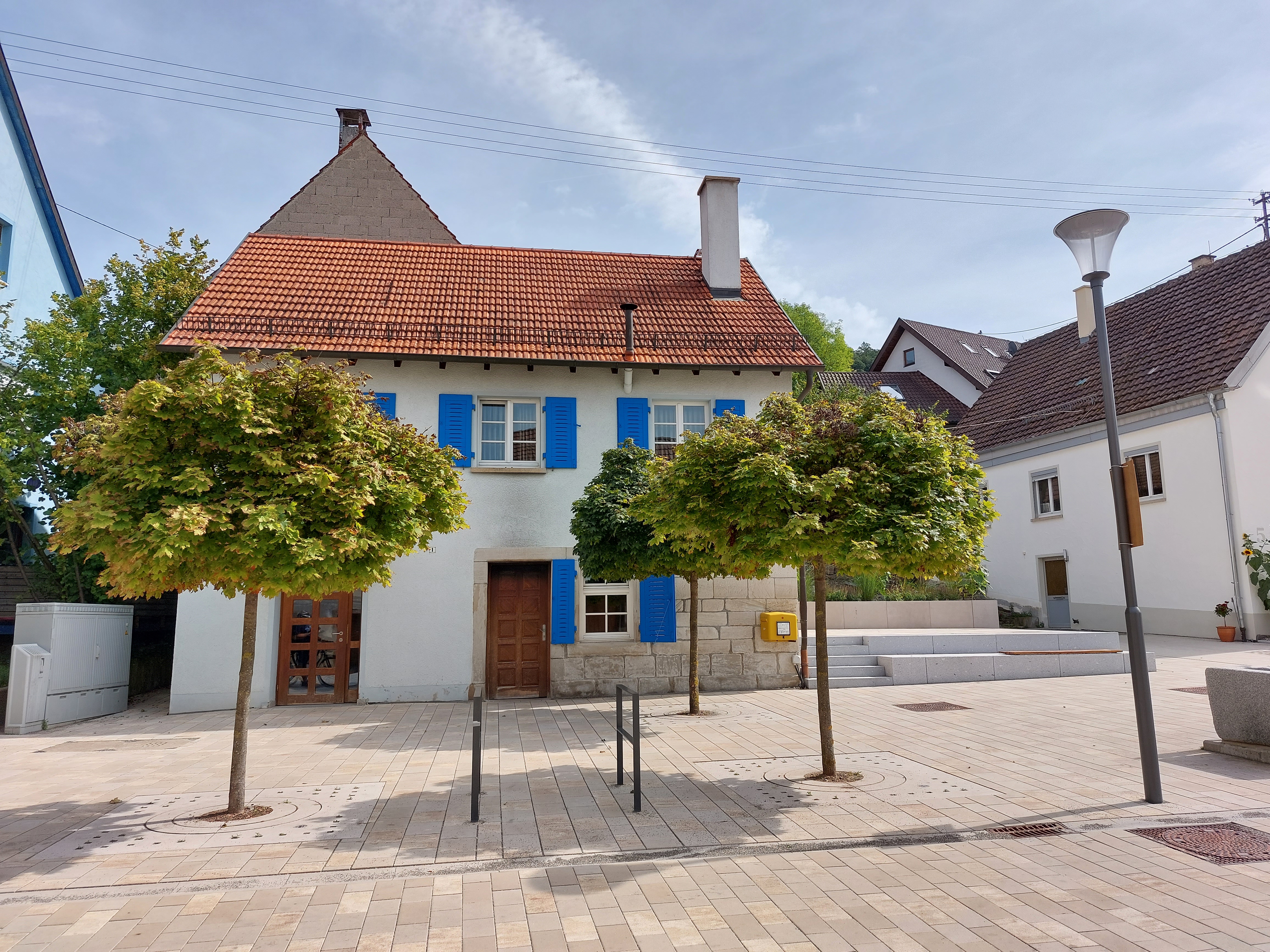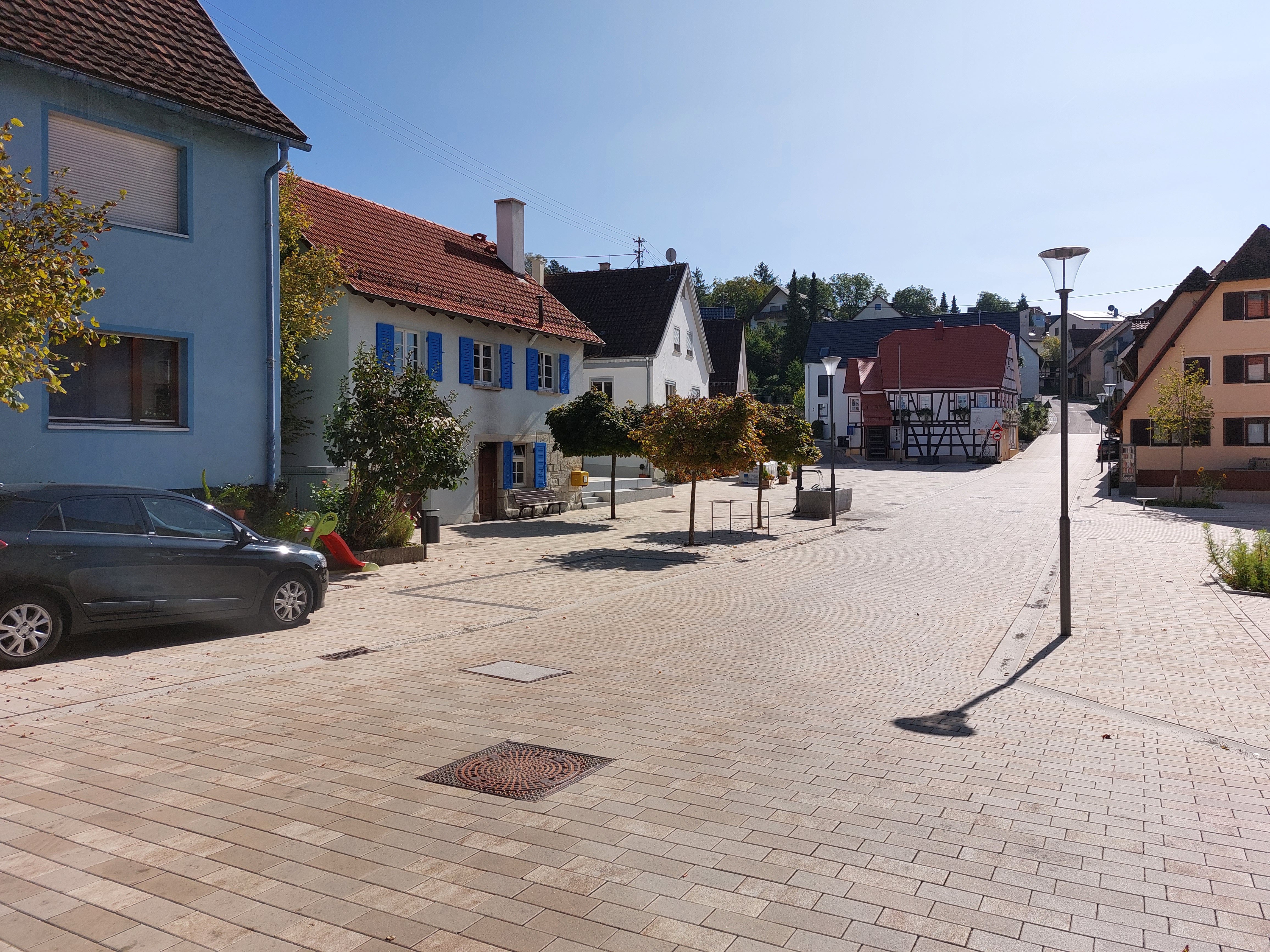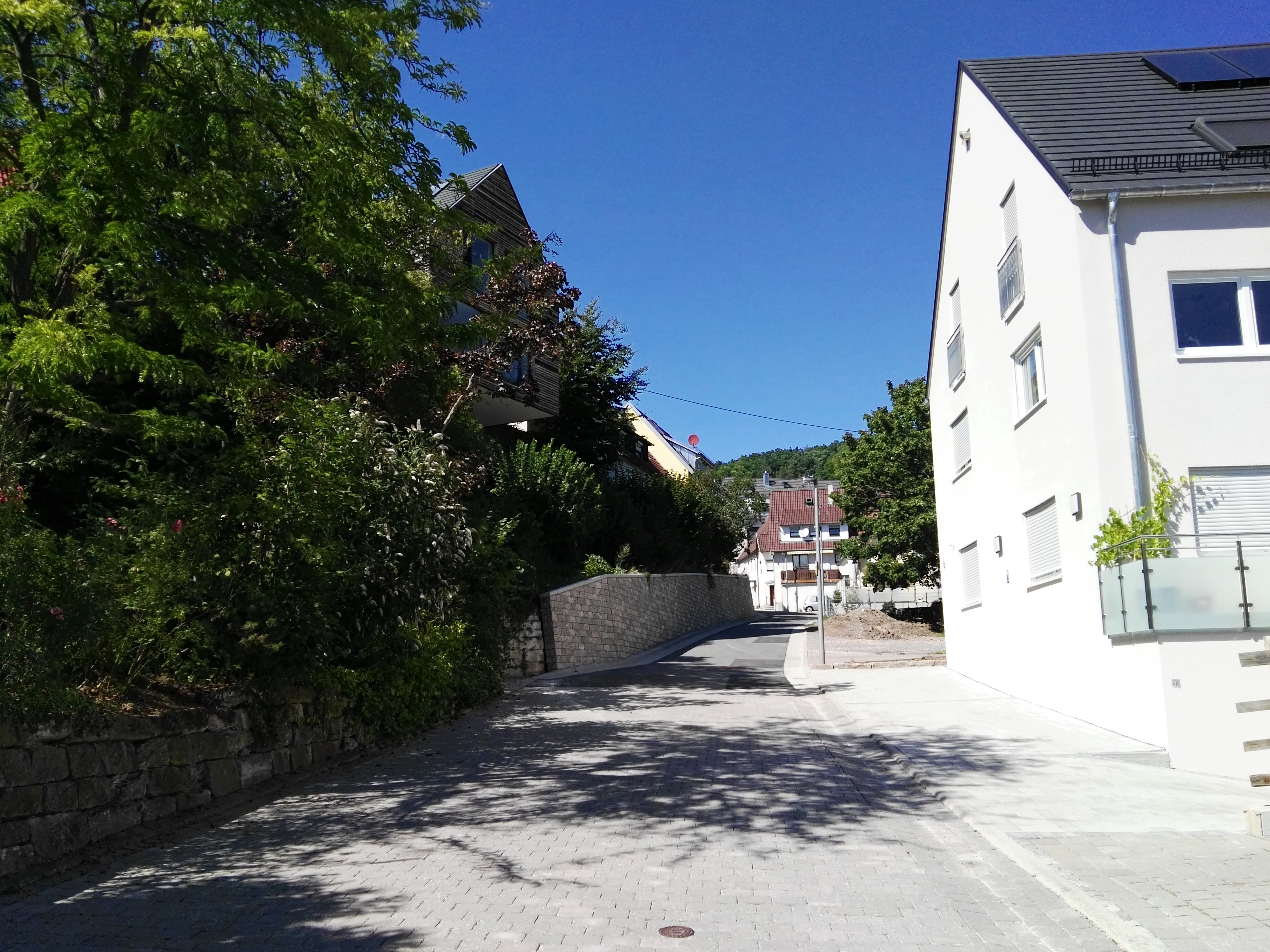Regaining a sense of belonging
Town center redevelopment Mönchberg
{Empty}
The aim of the village center redevelopment project in Herrenberg-Mönchberg was to renew the town center of Mönchberg and to promote private construction and renovation measures in the town that would revitalize the current living situation and provide space for social interaction. The modernization of public buildings in cooperation with private owners around the village square now offers an attractive meeting place for the population.
Germany
Local
Herrenberg-Mönchberg
Mainly rural
It refers to a physical transformation of the built environment (hard investment)
Yes
2024-07-31
No
No
Yes
No
Yes
As a representative of an organisation
The aim of the town centre redevelopment project in Mönchberg was to strengthen the quality of life in the area, the sense of belonging of the population to their home and the creation of new and the revitalization of existing housing options. With the creation of the new town center, a space was created that can serve as a meeting place for citizens and associations and creates a sense of community. The renovation of the surrounding buildings has resulted in an ecologically sensible and sustainable conversion that also contributes to a more attractive townscape. By demolishing old and vacant buildings, space was made available for new apartment buildings, which can be rented out at reasonable rents in a beautiful and natural environment in the Stuttgart area. The second aspect lies in the renovation of old existing buildings, which has resulted in an internal densification and yet the preservation of buildings that are not ready for demolition. With the mixture of renovation and new construction of buildings as well as the creation of an attractive town square, sustainable living in Mönchberg, the strengthening of the community in the town and togetherness could be significantly increased. Overall, we have only received positive feedback that the quality of life has been improved and the townscape has been beautified. This success story was made possible by a collaboration between private individuals and the public administration.
Revitalization of the town center.
Creation of new living space.
Strengthening the sense of belonging.
Promoting a sense of home.
Conversion of buildings.
Sustainability was the top priority for the town center redevelopment project in Mönchberg. When the decision was made to carry out a town center redevelopment project, it was important to renovate the energy efficiency of the public buildings in the redevelopment area so that they were state of the art. Exactly the same energetic consideration was encouraged among the citizens, who received a subsidy for the work carried out when renovating or demolishing an old building that could no longer be renovated. Through this cooperation, not only public buildings but also private buildings were brought into focus, creating a holistic picture of the current stock and the renovation tasks to be carried out. The individual assessment of people who were willing to get involved in the refurbishment then identified the adjustments that needed to be made in order to offer a sustainable and energy-saving alternative to the current situation. However, we also see sustainability in the fact that more living space has been created on the same site without the need for more sealed surfaces. Sustainability also lies in the creation of meeting spaces, as this interaction leads to an identification with the environment, which in turn leads to a more precise and questioning approach to this environment.
Before the renovation of the town center, the building stock in Mönchberg was relatively old. Some of the buildings were difficult to renovate and detracted from the townscape. As many of these buildings were formerly used for agricultural purposes, their large cubature made them eye-catching and did not contribute to the aesthetics of Mönchberg. The town square should be explicitly mentioned here, as its appearance did not produce a pleasant external effect. Thanks to the willingness of private individuals and the public sector to renovate, it was possible to renovate and refurbish the buildings around the village square, creating an image that is inviting and encourages people to stay and interact with others. The newly designed village square also plays an important role in this context. It is not only the image around it, but also the core that invites people to spend time here. The combination of these two aspects creates added value in terms of aesthetics and quality of experience, inviting the population to use the meeting space and thereby promoting social cohesion and a sense of belonging.
The project is exemplary in terms of inclusion, as the citizens, i.e. the owners of the existing buildings in the redevelopment area, have been given the opportunity to receive funding across the board if they have carried out the renovation of their buildings or their demolition under the conditions of, for example, energy efficiency. In addition, one point of inclusion can be seen in the fact that citizens were involved in the process of the redevelopment area from the outset. To this end, information events were held and citizens had the opportunity to enter into a dialog with the city administration at any time regarding problems or suggestions.
As the town center redevelopment in Mönchberg was a measure that affected both public and private buildings and areas, the local population was involved in the process from the outset. Through information events and discussions with those responsible in the public administration, the concerns and worries, as well as the ideas and suggestions from the population, were taken into account in the basic concept. With all this information, the redevelopment area was developed and planned piece by piece before it came into force through a decision by the local council and the municipal council. During the term of the redevelopment area, further discussions were held with local residents and they were consulted. Overall, the focus was on cooperation and collaboration throughout the entire process.
If we want to start from the core, here are the private individuals who have agreed to renovate their buildings and areas thanks to the supportive funding. They therefore form the core, as this is where the results are most visible in the end. One step further out is the Herrenberg city administration, which played a key role in coordinating the administration and planning of the redevelopment area. It has also invested in its own buildings and public spaces in order to create a multi-storey building and to renew the infrastructure for the coming years. A further level is formed by STEG as the project company, which has helped drive forward the planning and advised private individuals. The last but sometimes most important stakeholder is the state of Baden-Württemberg, as it provided the necessary funding to support the individual measures. With regard to monitoring the use of the redevelopment area, regular status reports from the city administration had to be submitted to the state in order to keep track of how the redevelopment measures were developing.
The Mönchberg town center redevelopment project reflects and combines the three themes of sustainability, inclusion and also aesthetics and quality of experience. On the one hand, sustainability is evident in the renovation of buildings or the creation of new and, above all, more living space on the same footprint. Here, a contribution is made to using less energy and creating more apartments at a reasonable rent in relation to the region while using the same amount of space. Inclusion is combined with sustainability, as the funding for refurbishment is linked to fixed criteria that apply equally to all owners in the refurbishment area. Furthermore, inclusion is embodied by the newly created town square, which is intended to function as a meeting place and strengthen togetherness, diversity and social cohesion. This also creates a link to aesthetics, as the town square is designed and laid out in a visually appealing way. It serves a cultural purpose, as citizens can use it as a meeting place and clubs can use it for events and celebrations. This allows the final link to be made to sustainability, as people use the newly created space together, recognize its value and care for it accordingly, and are sensitized to the sustainable management of the space.
The project is characterized by an innovative character, as it is about the development of the town center in Mönchberg, as a task of the public administration and the private owners of the buildings. The project can only succeed through cooperation and the will to work together to beautify the townscape and increase the sustainability of the buildings. Public funding makes it more likely that private individuals will also invest in their buildings. This interplay of promotion and renovation of publicly owned buildings, as well as private and the design of public spaces, opens up the possibility of moving Mönchberg forward together and positioning it well for the coming years and challenges.
In cooperation with STEG as the project company and with the help of funding from the state of Baden-Württemberg, a basic assessment of the existing buildings was carried out. A redevelopment area was then designated, in which refurbishments, renovations and demolitions were funded in the coming years. Through the planning of the village square and, for example, the adjacent bakery, the public spaces were redesigned so that a better coexistence could be created in the areas. Subsequently, those wishing to redevelop were supported and advised in identifying possible measures. Once the renovations had been carried out, the subsidies could be paid out.
The renovation program can easily be adopted in other municipalities if the municipality, the state or the federal government is willing to pay subsidies for renovations to be carried out. The provision of subsidies strengthens the feasibility and the will of private individuals to invest in changes to the sustainability or aesthetics of their buildings. This creates added value for residents and also serves sustainable development in the area of building efficiency. There is also the aspect that not only buildings can be further developed, but also public spaces can be sustainably upgraded and thus generate sustainable social value through encounters and exchanges. The important thing here is to develop a defined space in a defined time. This serves to ensure that development takes place step by step and that private individuals also have a set target in mind as to when a refurbishment must be tackled in order to receive the corresponding funding.
With this local town center redevelopment measure, we are counteracting various global challenges. On the one hand, new and more living space will be created on the previously used area, which is desperately needed. On the other hand, the refurbishment and new construction measures will identify energy-related issues that will make the buildings more sustainable by saving energy or, for example, by using green roofs to retain water. Of course, we recognize that this contribution to climate protection is a small one, but every opportunity that is conducive to climate protection is needed in order to be able to defy the upcoming climate challenges. In addition, the meeting space created in the town center provides a unifying element. The social divisions in many countries around the world stem from a fundamental antagonism and the mistrust that goes with it. With meeting places such as the village square, we offer a unifying element where people can come together, celebrate festivals or discuss issues.
The result of the town center redevelopment measure is extremely satisfactory. During the funding period from 2014 to 2024, countless private and public measures were implemented. The energy-efficient renovation of buildings, coupled with their aesthetic enhancement through external measures, significantly improved sustainability and the appearance of the town. Many urgently needed housing options were created, which led to the development of the community. The town square as the focal point and meeting point for the citizens now forms the heart of the town, which will lead to a revitalized community.



